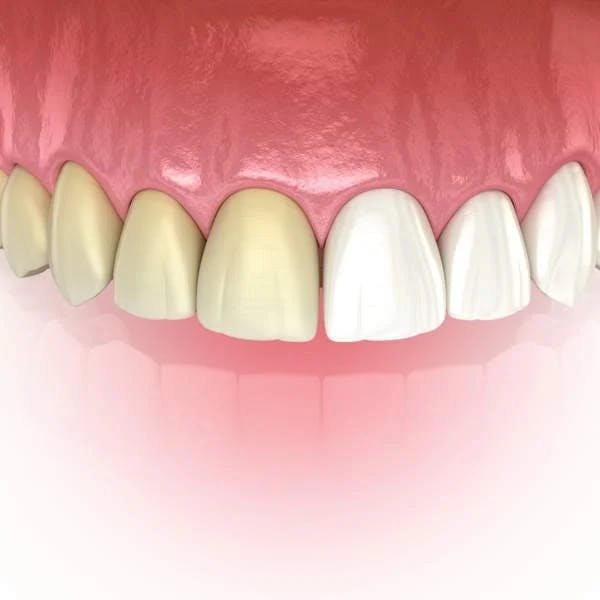Teeth Whitening
Teeth whitening is a simple, non-invasive dental treatment used to change the color of natural tooth enamel and is an ideal way to enhance the beauty of your smile. Because having whiter teeth has now become the number one aesthetic concern of most patients, there are a number of ways to whiten teeth. The most popular method is using a home teeth whitening system that will whiten teeth dramatically. Since teeth whitening only works on natural tooth enamel, it is important to evaluate replacement of any old fillings, crowns, etc. Replacement of any restorations will be done after bleaching so they will match the newly bleached teeth.

Reasons for Teeth Whitening
Everyone loves a bright white smile, and there are a variety of products and procedures available to help you improve the look of yours. Many people are satisfied with the sparkle they get from brushing twice daily with fluoride toothpaste, flossing once a day, and regular cleanings at the dentist's office. However, if you decide you would like to go beyond this to make your smile look brighter, you should investigate all of your options.
Is Teeth Whitening for You?
Consider teeth whitening if your teeth are darkened from age, coffee, tea or smoking. Teeth darkened with the color of yellow, brown or orange respond particularly well to whitening. Other types of gray stains caused by fluorosis, smoking or tetracycline are lightened, but results are not as dramatic. If you have very sensitive teeth, periodontal disease, or teeth with worn enamel, your dentist may discourage whitening.
How Teeth Whitening Works
It is important to have your teeth evaluated by your dentist to determine if you are a good candidate for bleaching. Occasionally, tetracycline and fluorosis stains are difficult to bleach and your dentist may offer other options, such as veneers or crowns to cover up such stains. Since teeth whitening only works on natural tooth enamel, it is also important to evaluate replacement of any old fillings, crowns, etc. before bleaching begins. Once the bleaching is done, your dentist can match the new restorations to the shade of the newly whitened teeth.
